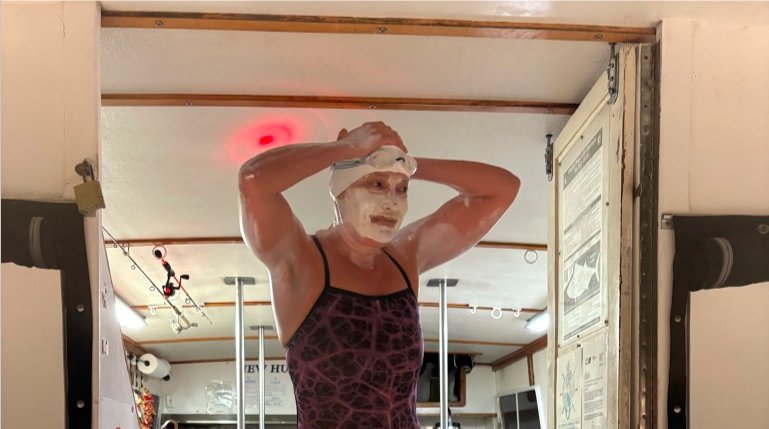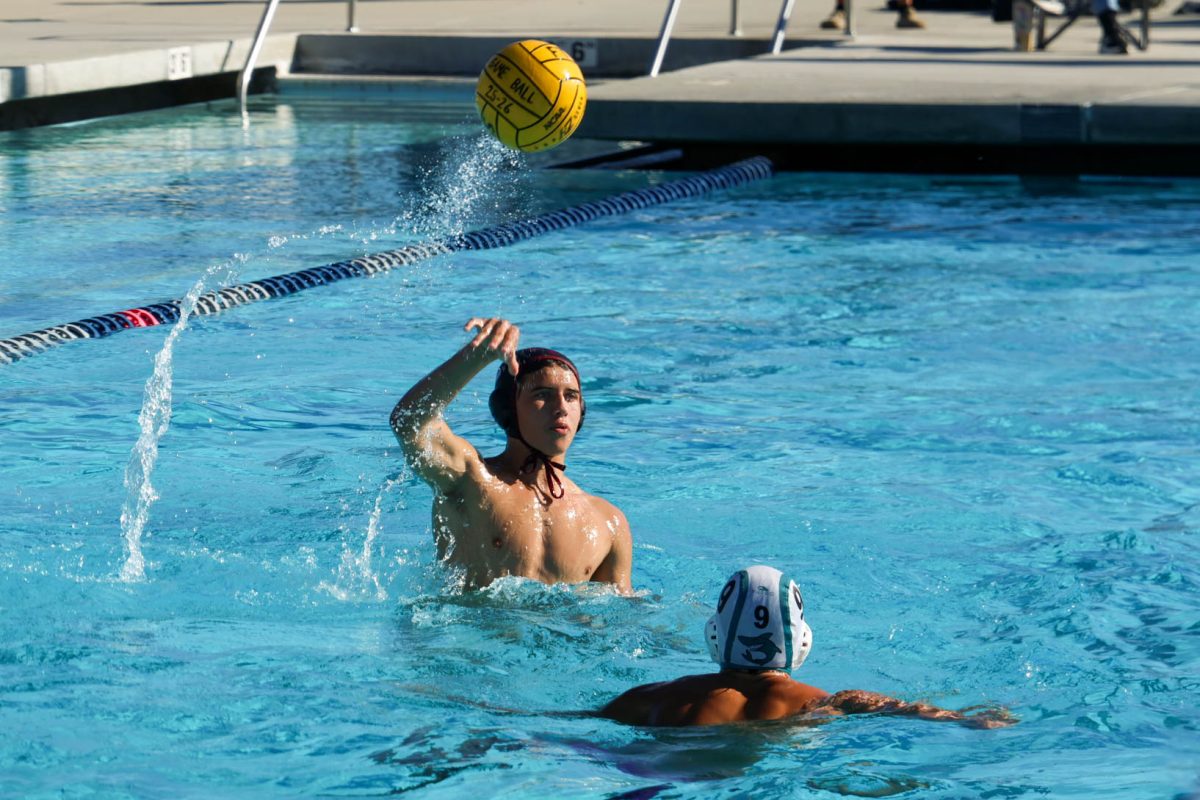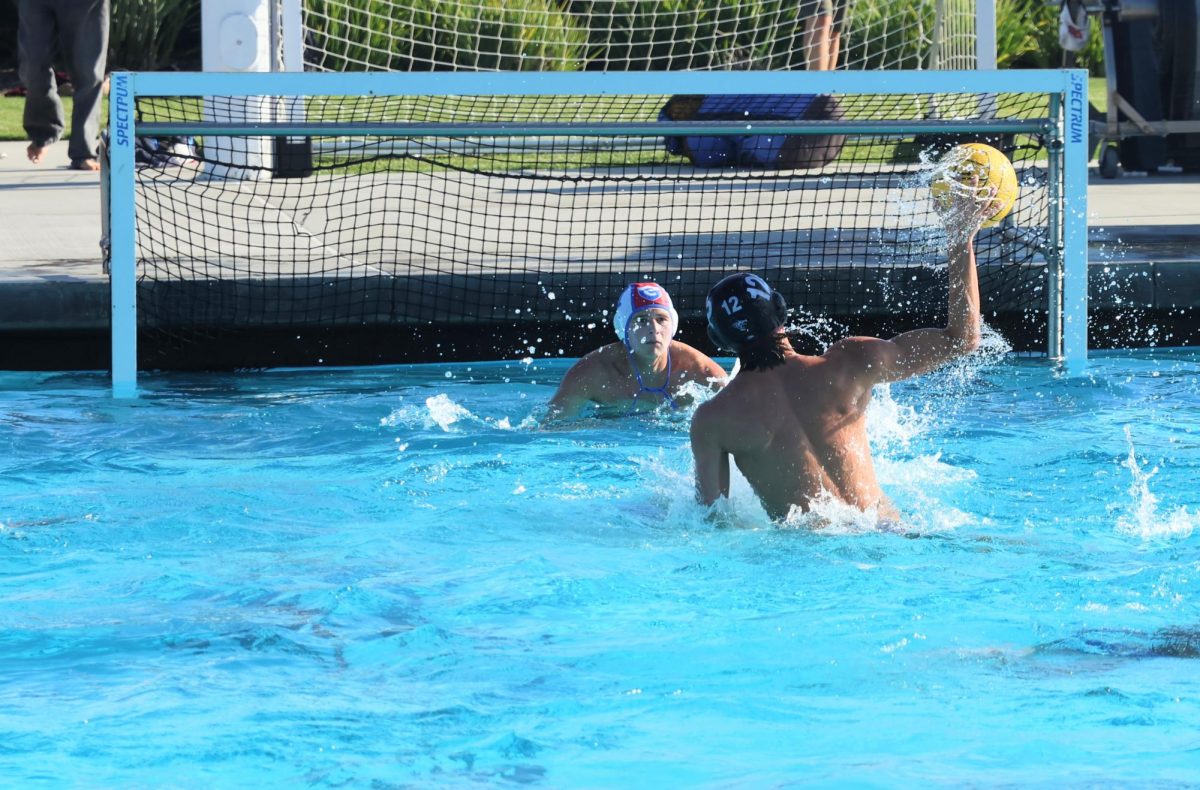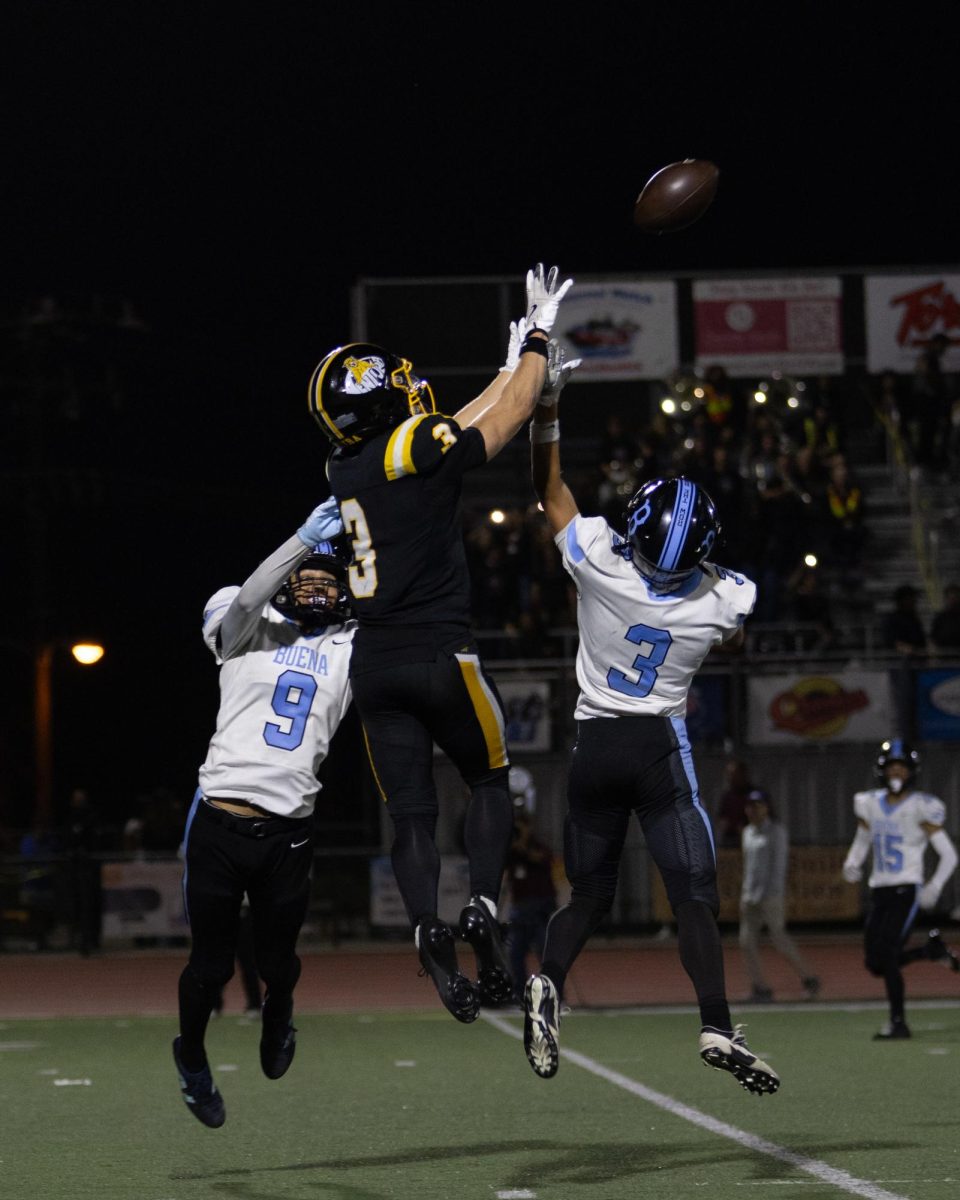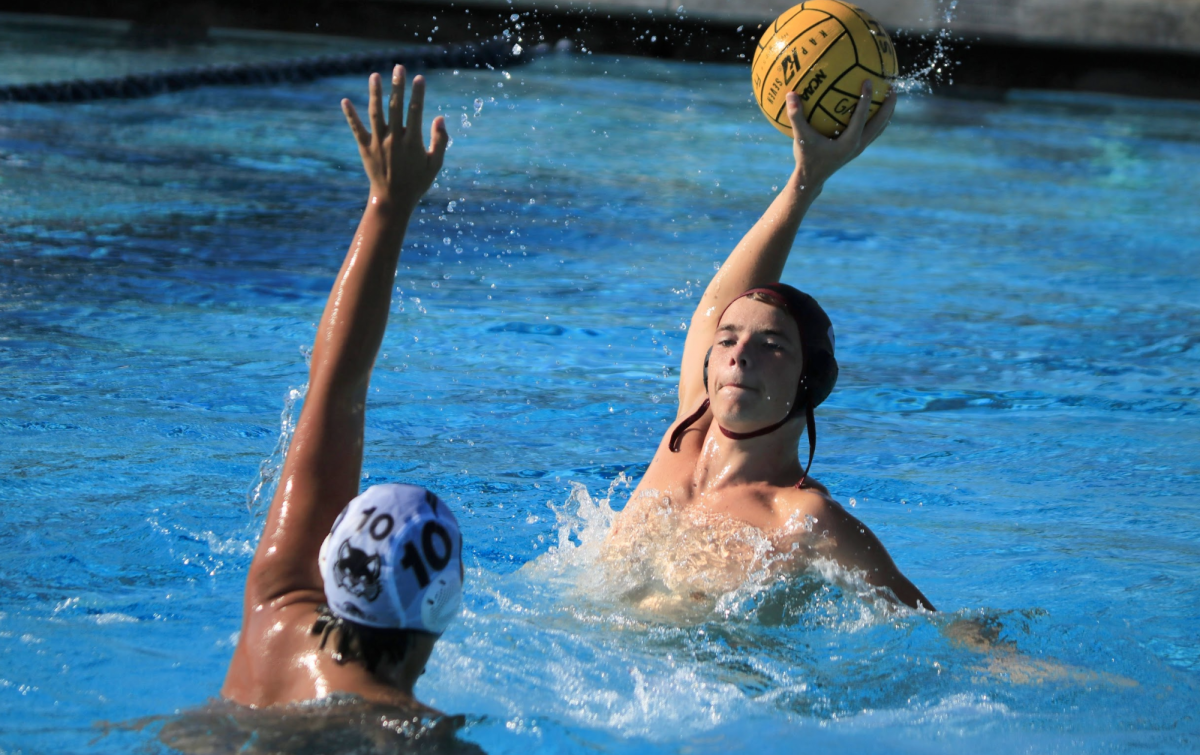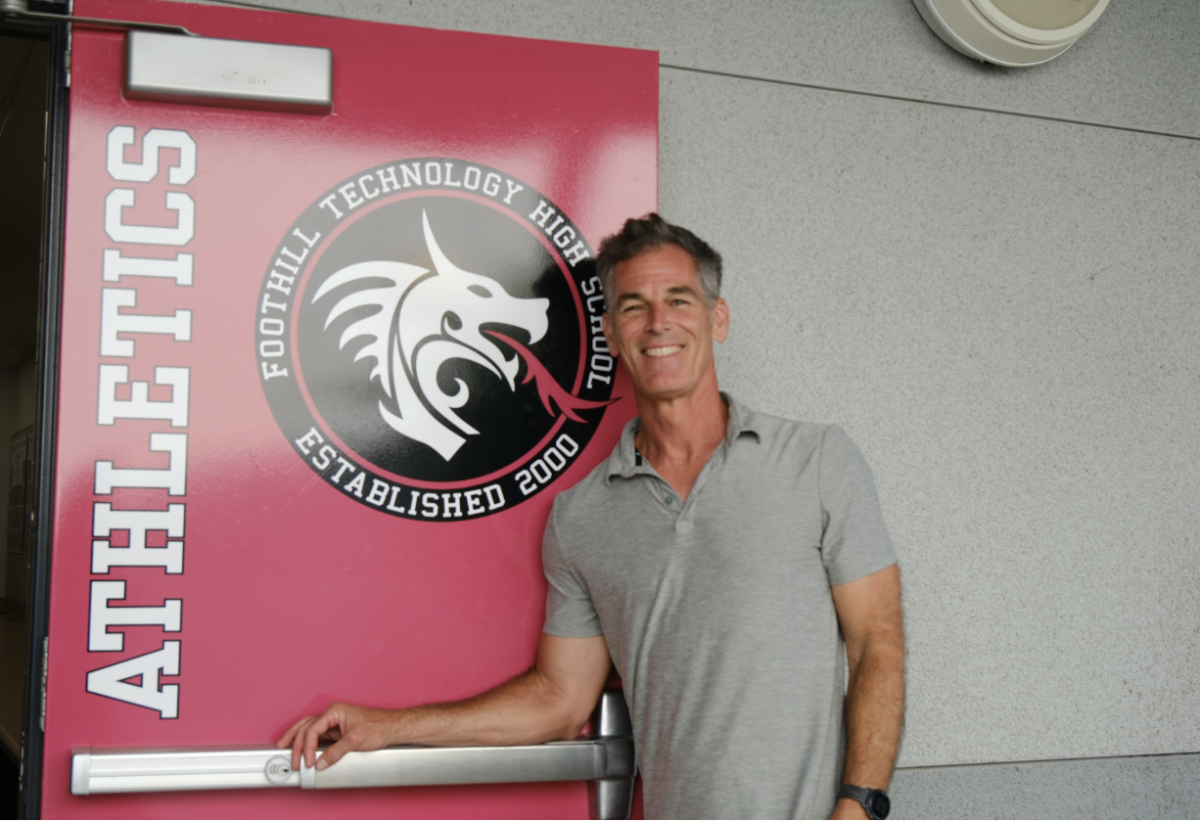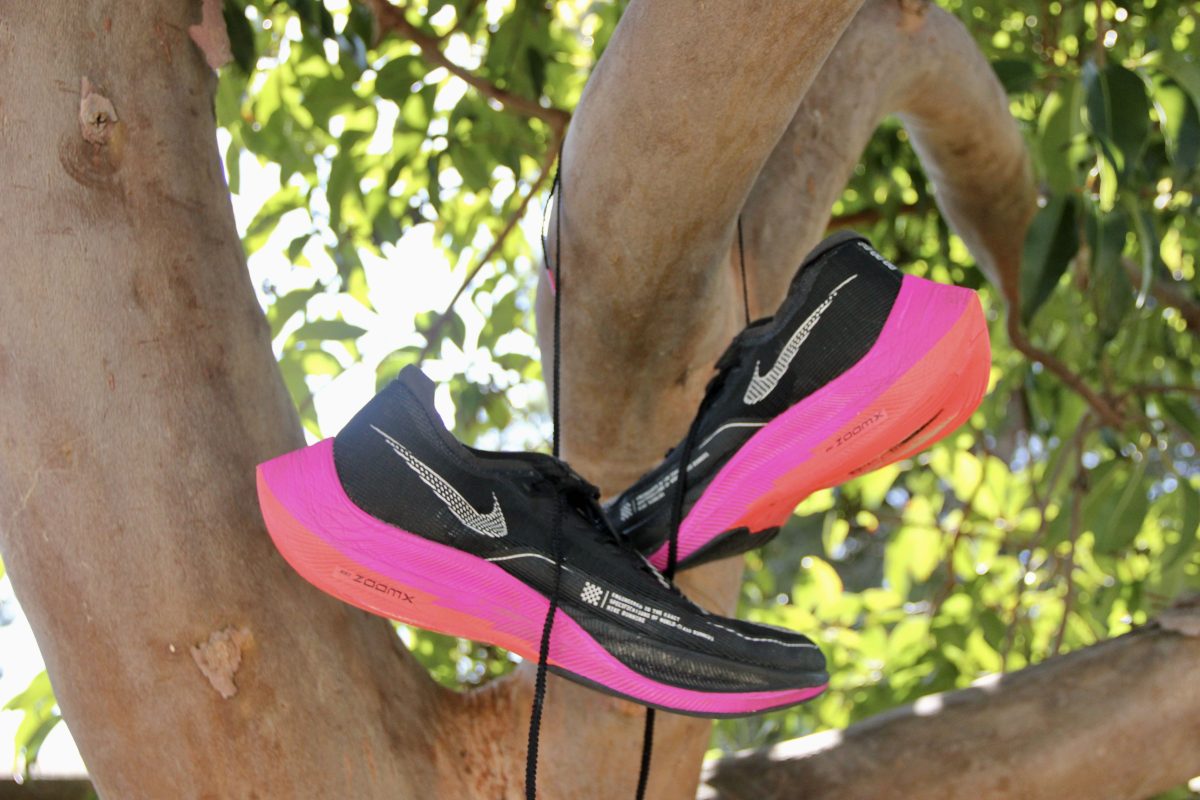On Sept. 16, 2025, open water swimmer Karina Garcia became the third person to complete the swim from Santa Rosa to Coal Oil Point in Goleta. In 14 hours and 5 minutes Garcia swam 27.5 miles, not only breaking a record but achieving her goal after six months of training: completing the swim. With 13 years of open water swimming experience, Garcia came to Foothill Technology High School to speak to students about her swimming journey and this specific swim that she hopes will raised awareness for the sport.
Garcia started on the swimming team at Rio Mesa High School, class of 2006, and did club swimming as well; however, she quickly got burnt out after she graduated. She eventually came back to swimming seven years later and joined the masters team. Garcia grew up around Ventura and was even scared of the ocean at one point; however, after one beach trip she took with some friends, she came back invigorated and ready to swim. She was eventually introduced to open water swimming and completed her first marathon swim, after building up her strength in distance swimming, from Catalina Island to the mainland. This swim was on Sept. 19, 2016 and began her life as an open water swimmer.
“So, I started to build up the distance, and that was already what I was better at, like, 500’s in high school. So I built up my distance and eventually, in 2016, I did my first big marathon swim, which was Catalina Island to the mainland. So that’s a 20 mile swim. It’s a really popular one and that was my first big marathon swim. It was a nice night,” said Garcia, in her presentation as she talked about her first swim.
The Basics
In open water swimming, the type of gear being used is essential. Garcia only used a regular swimsuit, cap, goggles, earplugs, sunscreen and grease. There are no wetsuits allowed in marathon swimming, only a regular swimsuit. The white cream smeared over Garcia’s body before every swim is not actually sunscreen; it was diaper rash cream.
“So we use desitin because it’s basically zinc, which protects us from the sun and it doesn’t come off. So even though I’m starting a swim at three in the morning, I don’t have to worry about a sunburn, but I will, you know, 10 hours later. So, the desitin stays on the whole time”, said Garcia.
The Crew
Garcia is never alone on these swims. These swims can be dangerous, as whilst swimming, Garcia can lose her sense of direction, so having a crew is essential. There is the boat crew, who keep the boat on course and determine whether swimming conditions are safe, as well as her own crew, who are certified as observers to make sure all rules are followed and everything is safe. To secure her own crew, they must keep a lot of documentation on the swim and must be approved as observers through the Harvard Gale Swimming Association. Throughout the entirety of the swim, Garcia is led by a kayaker so she can stay on course.
“So two of my friends were observers, and my other friends worked as my support group. They cheered me on, helped keep me motivated, made sure my feeds were taken care of, and if I needed to switch out goggles or something, they’d take care of that. So I’m lucky to have good friends who are willing to be out on a boat for 24 hours”, Garcia said.
Feedings
Feedings are necessary for marathon swimmers as they are constantly swimming for many hours, depending on the swim. These feeding breaks happen every 30 minutes and can include a carbohydrate drink (20 carbs/ 80 calories), baby food, Advil and gel caffeine. Every feeding, she is alerted by her kayaker, who blows a whistle. These feedings are usually pretty short and give her a mental break after so long in the water.
“When you’re in the water for that long, your jaw, it gets a little tight, you can’t chew, and your mouth kinda gets torn up in the salt water. So when I eat food, it doesn’t sound that appetizing. I need things that I can just swallow without having to chew”, said Garcia.
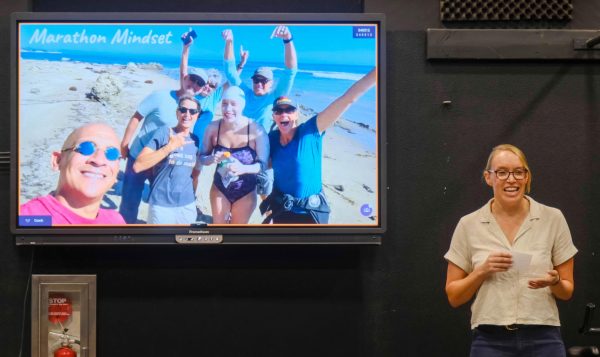
“Get your mind right”
Marathon swimming is very mental and combined with physical challenges that occupy the swimmer’s mind throughout the entirety of the swim. Garcia was taught to “get your mind right” by one of her training buddies and mentors. In marathon swimming, the time can range from to over 13 hours and can be a 10K, six miles or more. In this case, on the Santa Rosa to Goleta swim, Garcia swam 14 hours and five minutes; however, she told the Dragons that for this specific swim, she’d been prepared to be in the water for over 20 hours.
“There’s no stimulation. I can’t really hear much. I can’t see much. There’s not really any scenery; any time I got up, it was the same. So it can get really isolating, and I say to my friends, you know, ‘I’m in the water suffering and everyone’s all nice and comfy on the boat’. But it’s really important to be strong mentally to make it through all that”, Garcia said.
Throughout the swim, open water swimmers aren’t allowed to listen to any music, so there is a lot of time for thinking whilst swimming. Garcia admitted to thinking about getting out of the water multiple times in the duration of the swim. However, with the goals Garcia has, she knows she’d only regret it and hate to tell the people on board the boat, cheering for her, about how she gave up.
“When it comes to comfort, I am uncomfortable at some point; it hurts. I try to put that out of perspective, and I try to notice when I’m feeling less uncomfortable, and I tell myself ‘Okay, I’m uncomfortable. It might be seven more hours of this. This is a long time, but if I think of it in terms of my whole life, it’s not really that much time. Most of the time, I’m pretty comfortable. So, I try to think of it like that. It’s really just a small portion of my life”, Garcia said.
To take her mind off the time or how uncomfortable she is whilst swimming, Garcia occupies her mind by counting her feedings. She’s also not very scared of the dark and even thinks of it as peaceful. The darkness allows her to feel as if there is no sense of time and makes it easier to zone out while swimming. When the sun comes up, it works as a mood booster, as these are some of the only things she notices while swimming, and they give her motivation. Even with a pod of 100 dolphins surrounding her, Garcia may only notice one.
“I try and turn off my mind as much as possible, but that’s actually pretty hard to do. Im not the best when it comes to meditation or that kind of thing. So, I tend to count my feeds and kind of play games with those numbers in my head”, said Garcia.
“Paying dues to the channel gods”
According to Garcia, you must pay your dues with training. Garcia and her swimming buddies like to joke about “paying dues to the channel gods”, especially when it’s a good swim day, as they’ve recognized her effort and made the current bearable and the weather nice and clear. Garcia swims six days a week in the pool and ocean. She swam 25-30 miles a week in the six months leading up to the Santa Rosa to Goleta swim.
“I get burned out with that, but when I start to feel like, ‘I don’t want to swim today, I’m tired, it’s boring’, because swimming is kind of a boring sport, to be honest. I think about the goal that I prepared for and I know that I wanted to try and decrease the amount of pain I feel on my next swim, so it’s worth it training today”, Garcia said.
When you’re an open water swimmer, you can’t control everything. You can pick the boat, the crew, the type of training you do, the swimsuit you wear, all of that. However, the channel, temperatures and the wildlife that make open water swimming somewhat unpopular are unknown. She’s never really been worried about the wildlife, with her only interactions being swimming with a pod of dolphins and once being bodychecked by a seal.
“[The wildlife is] just a part of it, but we’re not attracting sharks, we’re not fishing and there’s no other water. So, I don’t think it’s a real risk. I always say I’m more likely to get in a car accident”, Garcia said.
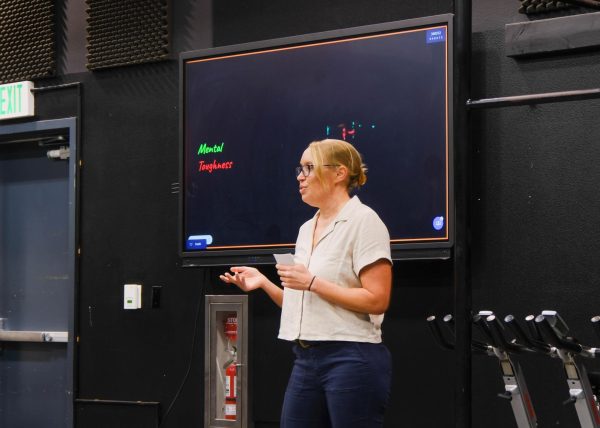
To embrace all of these conditions is good training for Garcia. Before the Santa Rosa to Goleta swim, Garcia was nervous. However, she knew that by trying, despite whatever conditions may prevent her from swimming, Garcia was excited to take on a bigger challenge. On this day in particular, Garcia was lucky enough to have close to perfect conditions and she finished her swim.
Failure
Failure is one of Garcia’s greatest fears. She has faced failure multiple times; however, one that hit the hardest was from Oxnard to Santa Clara Island in 2021. It was her biggest swim so far. 30 minutes into her first attempt, she had to get out of the water.
“It was really devastating, and I was so disappointed, but I learned a lot. That was when I didn’t have a plan for when things weren’t going right. I only had a plan when everything was working out. So that was a big learning opportunity,” Garcia said.
On her second attempt, in 2022, Garcia understood these fears that she had and also pushed herself not to leave the water this time. However, due to some unsafe weather conditions, she was pulled out by the captain of the boat crew. She spent five hours swimming in some of the hardest conditions she’s faced until the captain felt it was unsafe for her. However, a few weeks later, she attempted the swim again and finally completed it.
“I do actually get a lot of satisfaction out of the training. You know, people think about the big swim, but it’s actually a bigger problem with all the training, getting after that event”, Garcia said.
The Santa Rosa – Goleta swim
This swim in particular has only had four people complete it, Garcia being the third. The swimmers include: one man in 2008, one woman in 2018 and by coincidence, another woman who completed the swim on the same day as Garcia, Sept. 16, 2025. She was uncomfortable the first five hours of the swim, but she quickly got into her groove and ended up feeling positive about her mood during the swim. She knew she had a good shot at not finishing, but she knew she’d regret it if she didn’t try. She ended up not only surpassing her expectations in regards to finishing the swim, but she even broke a record in the process, swimming 27.5 miles in 14 hours and five minutes.
“I think my favorite swim of all the ones I’ve done was this last swim. I was in beautiful conditions and I was actually in a perfect headspace. I usually get kind of negative and cranky out there, but this swim was more positive and I was really appreciating the great conditions”, Garcia said.
She started at one in the morning, not including the four hours it took to get out there near Santa Rosa. The boat could only get so close to the island, and as per the open water marathon swimming rules, Garcia had to touch Santa Rosa Island before starting her swim. In Garcia’s experience, these were the darkest conditions she’d ever swam in. It was overcast with no stars and no light from the mainland. The water temperature was around the low 60’s, and the experience itself was a little freakish to Garcia; she couldn’t even see the island despite the boat’s light, everything bounced off the fog.
“I was swimming through kelp and I saw, like, three inches of bum on the water, which was kinda nasty. And I thought, ‘What am I doing out here? I need to get out’, but I wasn’t serious about that”, Garcia said.
Passing on the legacy.
Marathon swimming is somewhat of an unpopular sport; however, Garcia hopes that this swim and any future swims in the open water swimming community will bring about some more attention to these amazing athletes.
“I think my biggest piece of advice around [a younger person who thinks they’re incapable of doing something or thinks it’s out of their reach] is, I see regular people do these kinds of things every day: people of all shapes and sizes, people with different backgrounds and abilities. I mean, it’s really just that dedication and the training. I think, with the right training and right support, you can achieve whatever goal you’re setting for yourself”, said Garcia.
Speaking at Foothill Technology High School was Garcia’s first time reaching out to the community. Reaching out to a high school in particular, Garcia hopes that this will plant a seed in some swimmers’ minds and encourage them to try new things and take on a challenge, even if that means swimming through kelp and bum, in the dark, to reach a creepy island at one in the morning.

